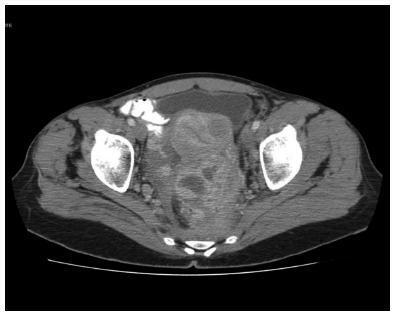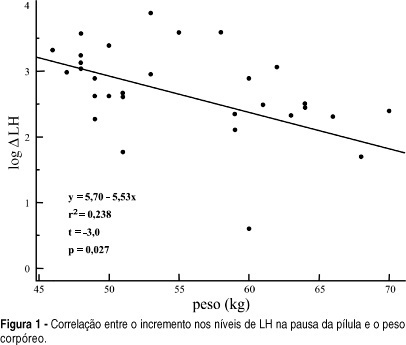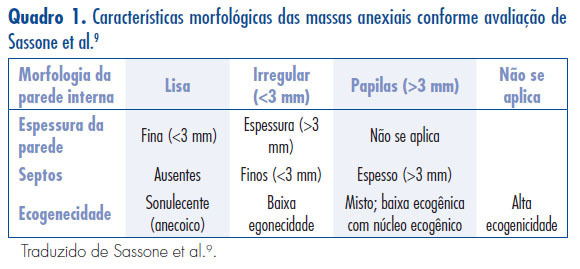Summary
Revista Brasileira de Ginecologia e Obstetrícia. 2014;36(10):461-466
DOI 10.1590/SO100-720320140005029
To compare clinical and laboratory characteristics, obstetric and perinatal outcomes of patients with pre-eclampsia versus gestational hypertension.
A retrospective study was carried out to analyze medical records of patients diagnosed with pre-eclampsia and gestational hypertension whose pregnancies were resolved within a period of 5 years, for a total of 419 cases. We collected clinical and laboratory data, obstetric and perinatal outcomes. Comparisons between groups were performed using the test suitable for the variable analyzed: unpaired t test, Mann-Whitney U test or χ2test, with the level of significance set at p<0.05.
Were evaluated 199 patients in the gestational hypertension group (GH) and 220 patients in the pre-eclampsia group (PE). Mean body mass index was 34.6 kg/m2 in the GH group and 32.7 kg/m2 in the PE group, with a significant difference between groups. The PE group showed higher systolic and diastolic blood pressure and higher rates of abnormal values in the laboratory tests, although the mean values were within the normal range. Cesarean section was performed in 59.1% of cases of PE and in 47.5% of the GH group; and perinatal outcomes in terms of gestational age and birth weight were significantly lower in the PE group.
Women with gestational hypertension exhibit epidemiological characteristics of patients at risk for chronic diseases. Patients with pre-eclampsia present clinical and laboratory parameters of greater severity, higher rates of cesarean delivery and worse maternal and perinatal outcomes.
Summary
Revista Brasileira de Ginecologia e Obstetrícia. 2000;22(7):462-462
DOI 10.1590/S0100-72032000000700016
Summary
Revista Brasileira de Ginecologia e Obstetrícia. 2019;41(7):463-466
Asymptomatic female genital tract colonization with Actinomyces spp is not uncommon, particularly among intrauterine device users. Pelvic actinomycosis is an extremely rare disease. The clinical picture can resemble an advanced ovarian malignancy. We report a case of pelvic actinomycosis mimicking ovarian malignancy diagnosed postoperatively. Preoperative diagnosis is possible if there is a high index of suspicion, obviating extensive surgery and preserving fertility, since long term antibiotic treatment can be completely effective. Pelvic actinomycosis should be included in the differential diagnosis of women presenting a pelvic mass, especially if there is intrauterine device use history.

Summary
Revista Brasileira de Ginecologia e Obstetrícia. 2004;26(6):463-469
DOI 10.1590/S0100-72032004000600007
OBJECTIVE: to evaluate serum levels of follicle-stimulating hormone (FSH) and luteinizing hormone (LH) in the pill-free interval of a combined oral contraceptive containing 20 mg of ethynylestradiol and 75 mg of gestodene. METHODS: thirty-one women from 17 to 36 years old, mean age of 24.5 years old, 19% adolescents, were included. FSH, LH, prolactin (PRL) and estradiol (E2) levels were measured by immunochemoluminescence. Both FSH and LH levels were measured within the last four days of pill intake and on the 7th day of the pill-free interval between two cycles. Hormonal levels were compared by the Student t-test. Comparisons between hormonal and anthropometric data were made by linear regression; values of p < 0.05 were taken as significant. RESULTS: seventy-one percent of women were using the pill for the first time. FSH levels increased from 1.3 to 5.7 mIU/ml between the end of the blister pack and the 7th day of the pill-free interval. LH increased from 0.8 to 4.3 mIU/ml. E2 levels changed from 20.2 to 28.0 pg/ml. The levels of PRL decreased from 12.4 to 10.2 ng/ml. There was no correlation between the changes in gonadotrophin levels and most of the anthropometric parameters in these women, with body mass index < 25 kg/m². CONCLUSION: the gonadotrophin levels detected on the last four days of pill intake were greatly suppressed, recovery of three to four times in amount occurring on the 7th day of the pill-free interval.

Summary
Revista Brasileira de Ginecologia e Obstetrícia. 1998;20(8):463-467
DOI 10.1590/S0100-72031998000800006
Purpose: to evaluate, in a prospective way, the performance of the fine needle aspiration biopsy in the differential diagnosis of palpable breast masses. Method: the sensitivity, specificity, positive and negative predictive values for this test were evaluated in 102 women with age above 30 years and a palpable breast mass, who were attended at the University of Campinas. All punctures were performed by the same examiner. Results: the procedure had a sensitivity of 97%, specificity of 87%, positive predictive value of 94% and negative predictive value of 93%. The insufficient or unsatisfactory sample rate was 16% for the first aspiration, decreasing to 2% with a new procedure. Conclusions: this test showed to be highly sensitive and specific for the differential diagnosis of palpable breast masses, reassuring its great importance for the clinical approach of palpable masses.
Summary
Revista Brasileira de Ginecologia e Obstetrícia. 2002;24(7):463-468
DOI 10.1590/S0100-72032002000700006
Purpose: to evaluate, in the first and second trimesters of pregnancy, the correlation between cervical length and spontaneous preterm delivery. Methods: cervical length was evaluated in 641 pregnant women between 11-16 weeks' and 23-24 weeks' gestation. Cervical assessment was performed by a transvaginal scan with the patient with empty bladder in a gynecological position. Cervical length was measured from the internal to the external os. The gestational age at delivery was correlated with the length of the cervix. To compare the means in groups of pregnant women who had a term or preterm delivery, we used Student's t test. Sensitivity, specificity, false-positive and false-negative rates, and accuracy were calculated for cervical length of 20 mm or less, 25 mm or less and 30 mm or less in the prediction of preterm delivery. Results: the measurement of cervical length, between 11 and 16 weeks of pregnancy, did not show any statistically significant difference on comparing women who had preterm and term delivery (40.6 mm and 42.7 mm, respectively, p=0.2459). However, the difference between the two groups at 23 to 24 weeks was significant (37.3 mm in the group who delivered prematurely and 26.7 mm in the term group, p=0.0001, Student's t test). Conclusion: there was no significant difference in cervical length, at 11 to 16 weeks, between pregnant women who had a preterm and term delivery. However, at 23 to 24 weeks, cervical length was significantly different between the two groups, and this measurement might be used as a predictor for prematurity.

Summary
Revista Brasileira de Ginecologia e Obstetrícia. 2013;35(10):464-468
DOI 10.1590/S0100-72032013001000007
PURPOSE: To evaluate the sonographic parameters related to morphological characteristics of pelvic adnexal masses by obtaining two-dimensional images by an observer presence, forwarded electronically (via tele-ultrasound) in static and dynamic modes observers do not face (distance) for comparative analyzes inter intraobserver and to the validation of a second opinion. METHODS: From March to August 2010 were selected 50 patients with adnexal mass viewing of the pelvic ultrasound. They were subjected to ultrasound for abdominal and transvaginal routes. The images were captured in static and dynamic modes, electronically forwarded for evaluation of non-presence and two examiners evaluated according to morphological ultrasonographic parameters previously determined. RESULTS: The evaluators did not face in static and dynamic modes obtained almost perfect agreement for all morphological parameters with Kappa values between 0.6 and 0.8. There was no difference between the methods employed, except for the morphological parameter papillary projection in the static mode , in which the agreement was almost perfect ( 0.8 ) while in dynamic mode was substantial (0.6). CONCLUSIONS: The sonographic parameters of the features of adnexal masses pelvic sent by tele-ultrasound are capable of being validated for issuing a second opinion. There were no significant differences in the methodology used in the issue of tele-ultrasound images (static or dynamic) to characterize the composition of pelvic adnexal masses.
